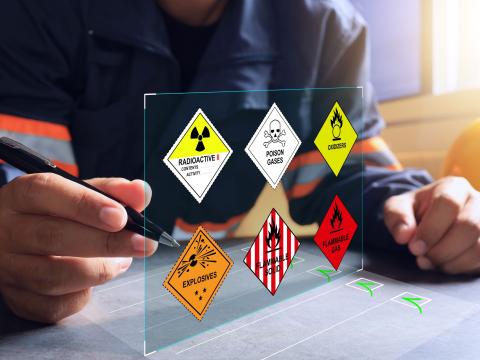A Lack of Major Movement Toward Human-Machine Teaming
To fully counter the threats posed by adversaries, the Department of Defense needs to harness autonomous and robotic systems, artificial intelligence and machine learning. The nation’s military is falling short of pursuing those systems on the large scale necessary, an expert says. Moreover, the department needs to holistically consider the purpose for which it is harnessing artificial intelligence, or AI, across the services, says Robert Work, the former 32nd deputy secretary of defense.
Work, who is currently a senior counselor at Telemus Group, LLC., senior fellow at Johns Hopkins University Applied Physics Laboratory, and on the Council on Foreign Relations—among other positions—is the vice chairman on the National Security Commission on Artificial Intelligence. Work presented the keynote address at the AFCEA Washington, D.C. Chapter’s Artificial Intelligence Tech Summit on September 1 and fielded questions on September 2.
“If it is true that we’re going to have a decisive advantage for many, many years, and AI will change the character of warfare, where is the urgent change at significant scale?” he asked. “I just don’t think we have the right sense of urgency for the task ahead.”
The Defense Science Board has identified artificial intelligence-enabled autonomy to be the most promising initial application, he said. The DOD should pursue that tool, as well as develop counter artificial intelligence-enabled autonomy solutions to protect against adversarial use, the secretary recommended.
“AI is a science,” he noted, “And so, its applications are going to be what are important. And not merely incremental enhancements to weapons systems capability. It is going to require a fundamental recalculation of what constitutes deterrence and military strength.”
However, Work continued, the department needs to decide on a more specific broad application of AI, pursuing enabled autonomy in all its forms. In particular, AI should be applied to gain an advantage in battle network warfare, at the operational level, to be able to stand against our near-peer competitors, such as China.
The Chinese believe that the way to have overmatch is through system destruction warfare, Work contends. “What they care about is blowing up the battle network,” he said. “They are beyond force-on-force mindsets. They care less about the number of airplanes that they shoot down or the number of ships they sink. “[Their focus] is about blowing apart the network and getting an informational advantage.”
China is pursuing AI-enabled expert advisory systems—like the Defense Advanced Research Project Agency’s (DARPA's) Deep Green project—to develop a decision-making support system that provides a portfolio of possible future outcomes based on battle plan options as well as real-time assessments and updates of current operations, the secretary said.
“The reason to pursue AI is to pursue autonomy in all of its forms,” he stated.
As such, the United States needs to pursue a greater deployment of AI applications in systems confrontation to gain any advantage, Work emphasized. This could be achieved through so-called autonomy at rest systems—intelligence support systems, predictive maintenance tools and other human-machine collaboration solutions—as well as autonomy at motion capabilities, including autonomous weapons, platforms, robots. “Both of those are critical,” he stressed.
The Chinese have already said they intend to be the first in developing artificial intelligence.
At present, the U.S. services are focused on developing their own programs and not on the joint enterprise, the secretary pointed out. Instead, DOD needs to have a much more top-down approach to Joint AI warfighting.
“We have to take this seriously and run the race like we are losing it,” Work stated.





Comments